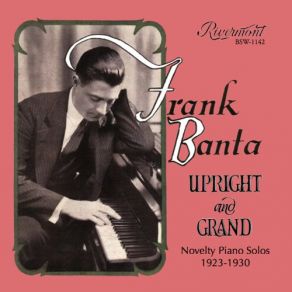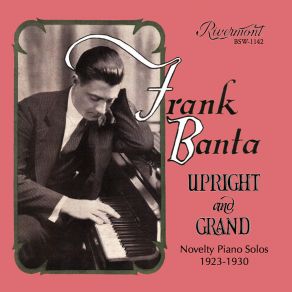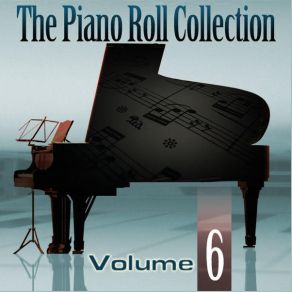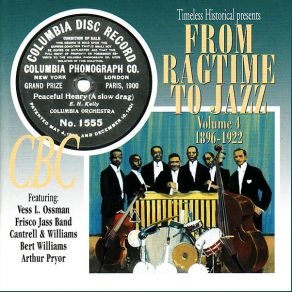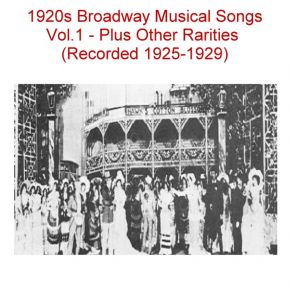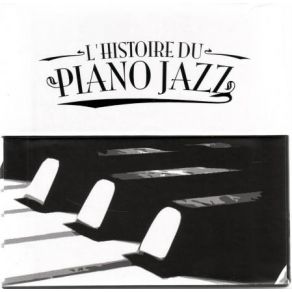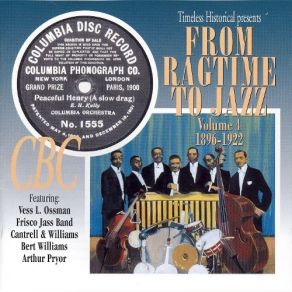Frank Banta
Wikimp3 information about the music of Frank Banta. On our website we have 2 albums and 13 collections of artist Frank Banta. You can find useful information and download songs of this artist.
Biography
[Edit]Banter concerning historic pianists will sooner or later come around to Banta. The early American musician Frank Banta was one of the nation's first major recording artists. During the early days of recording, when the ongoing change between piano rolls, cylinders, and primitive 78s made the compact disc revolution of the '80s seem like static motion, Banta had his fingers in every possible pie, creating documentations of his virtuoso keyboard technique with every recording machine in existence and for every format available. His father was Frank Banta Sr., a classical conductor who was waving his baton at the New York Metropolitan Orchestra at the turn of the 20th century. The importance of recording technology to the junior Banta is underscored in a poetic way by the fact that one of his best memories of his talented father was unusual and from a technical basis, highly experimental recording made by the Metropolitan Orchestra with Banta Sr. conducting in 1902. When his father passed away at an early age the very next year, this became a historic example of how recorded sound could preserve the artistry, as well as the memory, of the deceased. It was also one of the first orchestra recordings ever made. By the time he was in his teens, the junior Banta was already a studio pianist with Victor, a label that seemed as if it was attempting to record every type of music on the face of the earth, from old-time string bands to classical harmonica recitals. The pianist made many, many records, an output of shellac slabs that could cover over a small office building. In 1916, Banta became a member of one his first major groups, joining the brilliant banjoist Fred Van Eps and saxophonist Nathan Glanz in the new Van Eps Trio. This group recorded wild instrumental novelty numbers such as "Razz-Berries," "Pearl of the Harem," "Ragging the Scale," "Teasin' the Cat," "Down Home Rag," and "The Smiler Rag." Classically trained, Banta put his fantastic chops to the acceptable artistic muse of creating exaggerated and sometimes ridiculous musical panoramas. He embraced a school of classical pianists that also included Roy Bargy, Phil Ohman, Arthur Schutt, Zez Confrey, Willie Eckstein, and Billy Mayer, who wrote virtuoso piano pieces of great complexity, fabricating an intense, sparkling new style that sometimes sounded as if it was literally chasing after ragtime. These pianists delighted in interpreting each other's pieces. Banta recorded the tune "Slipova," an early syncopated novelty by Roy Bargy with just a subtle hint of the blues throughout as a duet with ragtime writer Cliff Hess. Another place the adventurous music listener will encounter Banta is in the rarefied world of mallet percussion instrumental showpieces recorded in the '20s and '30s. Vibraphone virtuoso Sammy Herman recorded his first sides with Banta accompanying him, and the pianist also collaborated with the brilliant xylophonist George Hamilton Green. The latter recordings have been reissued on the splendid Masters of the Xylophone, naturally from the Xylophonia label. Banta also backed up the strange Sam Moore on that musician's recordings of solo outings on the Stradivarius saw and the "octachorda." He recorded piano duets with whoever could keep up with him (including the masterpiece "Kitten on the Keys"), cut several records with the great banjoist Harry Reser, and worked fairly regularly in the early bands of Xavier Cugat. While most of this music tends to impress and possibly overwhelm the listener with cascades of notes, rapid harmonic movement, and the kind of playing best summarized as "ultra-chops," ironically some of Banta's most historic credits are related to much simpler forms of music. There is the standard "Ain't She Sweet?" that was first recorded in 1927 as a piano tune by Banta in something of a relaxed mood. The most frequently covered Banta original is the blues "Memphis Bound," which he co-wrote. Finally, there is the matter of the Mamie Smith sides released by OKeh in the summer of 1920, considered the first "race" records aimed particularly at a black audience. Hagar's Orchestra, a white dance band with Banta on piano, are the likely choice for the musical backup, although some copies of this record identify the group as the Rega Orchestra. Thus, Banta is often identified as the first pianist to perform on a blues record. He was an active composer of instrumental pieces as well as an interpreter, even churning out titles under other names. The complex piano solo "Originola," for example, is a Banta composition credited to the fictitious Hunter Kahler.
Collections
Title: The Piano Roll Collection (Volume 6)
Genre:
Title: From Ragtime to Jazz Vol. 4 1896-1922
Genre: Jazz
Title: Those Ragtime Banjos
Genre: World Music
Title: Old Time Banjo - Vintage String Sound
Genre: Pop
Title: Ragtime Kings (1900-1930)
Genre: Jazz
Title: Piano Ragtime of the Teens, Twenties and Thirties
Genre: Jazz
Title: Novelty Piano Recordings (1912-1928)
Genre: Songwriter/Lyricist
Title: The Piano Roll Collection, Vol. 7
Genre:
